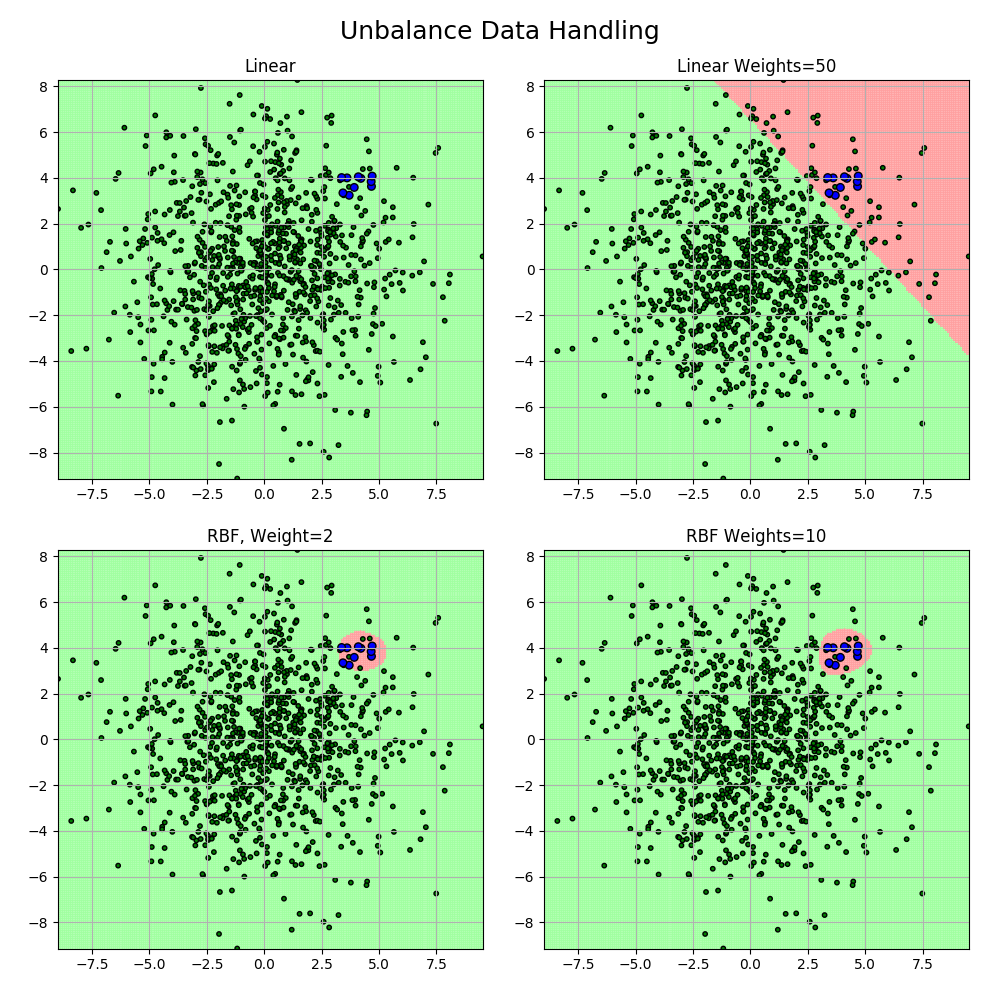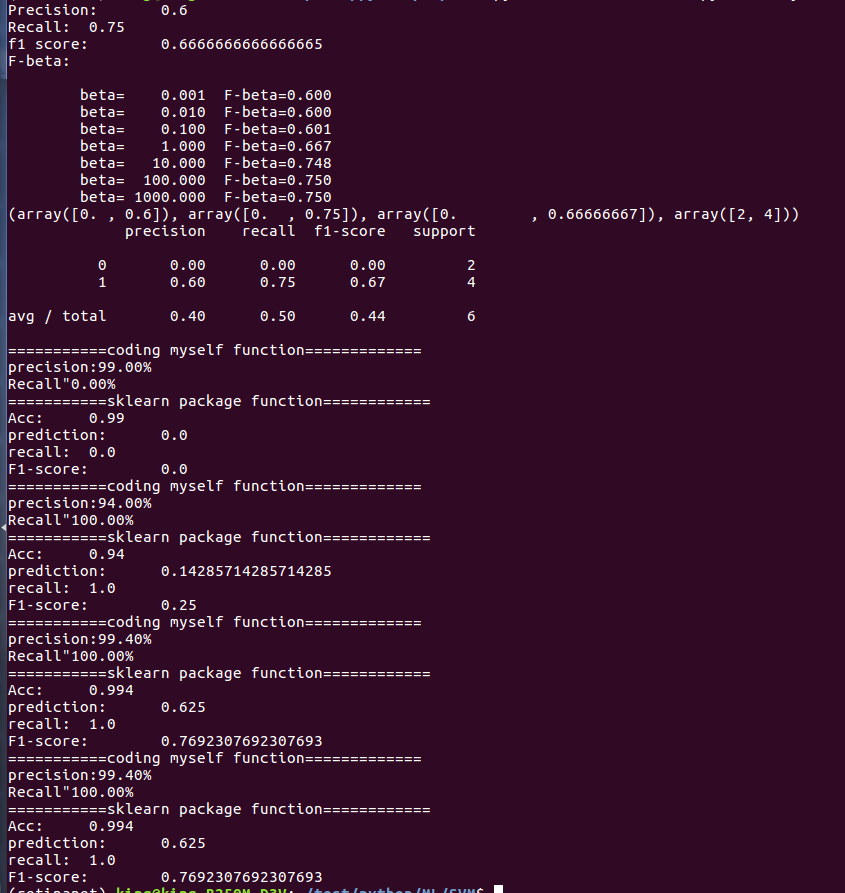機器學習svm--正確率和召回率以及基於不平衡資料的分類調參
阿新 • • 發佈:2019-02-15
code:
import numpy as np from sklearn.metrics import accuracy_score from sklearn.metrics import precision_score, recall_score, f1_score, fbeta_score from sklearn.metrics import precision_recall_fscore_support, classification_report from sklearn import svm import matplotlib as mpl import matplotlib.pyplot as plt import warnings def R_P(): y_true = np.array([1, 1, 1, 1, 0, 0]) y_hat = np.array([1, 0, 1, 1, 1, 1]) print('Accuracy:\t', accuracy_score(y_true, y_hat)) precision = precision_score(y_true, y_hat) print('Precision:\t', precision) recall = recall_score(y_true, y_hat) print('Recall:\t', recall) print('f1 score:\t', f1_score(y_true, y_hat)) # print(2*(precision*recall)/(precision + recall)) print('F-beta:\n') for beta in np.logspace(-3, 3, num=7, base=10): fbeta = fbeta_score(y_true, y_hat, beta=beta) print('\tbeta=%9.3f\tF-beta=%.3f' % (beta, fbeta)) print(precision_recall_fscore_support(y_true, y_hat)) print(classification_report(y_true, y_hat)) def show_accuracy(a, b): # 計算預測值和真實值一樣的正確率 acc = a.ravel() == b.ravel() print('precision:%.2f%%' % ((100*float(acc.sum()))/a.size)) def show_recall(y, y_hat): # 提取出那個小樣本集中的預測和真實一樣的正確率 print('Recall"%.2f%%' % (100*float(np.sum(y_hat[y == 1] == 1)) / np.extract(y == 1, y).size)) if __name__ == '__main__': # 忽視警告 warnings.filterwarnings('ignore') # 保證每次生成的資料一樣 np.random.seed(0) R_P() c1 = 990 c2 = 10 N = c1 + c2 x_c1 = 3*np.random.randn(c1, 2) x_c2 = 0.5*np.random.randn(c2, 2) + (4, 4) x = np.vstack((x_c1, x_c2)) y = np.ones(N) y[:c1] = -1 # 顯示出大小 s = np.ones(N) * 30 s[:c1] = 10 # 分類器 clfs = [ svm.SVC(C=1, kernel='linear'), svm.SVC(C=1, kernel='linear', class_weight={-1:1, 1:50}), svm.SVC(C=0.8, kernel='rbf', gamma=0.5, class_weight={-1:1, 1:2}), svm.SVC(C=0.8, kernel='rbf', gamma=0.5, class_weight={-1:1, 1:10}), ] titles = 'Linear', 'Linear Weights=50', 'RBF, Weight=2', 'RBF Weights=10' x1_min, x1_max = x[:, 0].min(), x[:, 0].max() x2_min, x2_max = x[:, 1].min(), x[:, 1].max() # 生成網格取樣點 x1, x2 = np.mgrid[x1_min:x1_max:200j, x2_min:x2_max:200j] # 測試點 grid_test = np.stack((x1.flat, x2.flat), axis=1) cm_light = mpl.colors.ListedColormap(['#A0FFA0', '#FFA0A0']) cm_dark = mpl.colors.ListedColormap(['g', 'b']) plt.figure(figsize=(10, 10), facecolor='w') for i, clf in enumerate(clfs): clf.fit(x, y) y_hat = clf.predict(x) print('===========coding myself function=============') show_accuracy(y, y_hat) show_recall(y, y_hat) print('===========sklearn package function============') print('Acc:\t', accuracy_score(y, y_hat)) print('prediction:\t', precision_score(y, y_hat, pos_label=1)) print('recall:\t', recall_score(y, y_hat, pos_label=1)) print('F1-score:\t', f1_score(y, y_hat, pos_label=1)) # 開始畫圖 plt.subplot(2, 2, i+1) grid_hat = clf.predict(grid_test) grid_hat.shape = x1.shape plt.pcolormesh(x1, x2, grid_hat, cmap=cm_light, alpha=0.8) plt.scatter(x[:, 0], x[:, 1], c=y, edgecolor='k', s=s, cmap=cm_dark) plt.xlim(x1_min, x1_max) plt.ylim(x2_min, x2_max) plt.title(titles[i]) plt.grid() plt.suptitle('Unbalance Data Handling', fontsize=18) plt.tight_layout(2.0) plt.subplots_adjust(top=0.92) plt.show()



